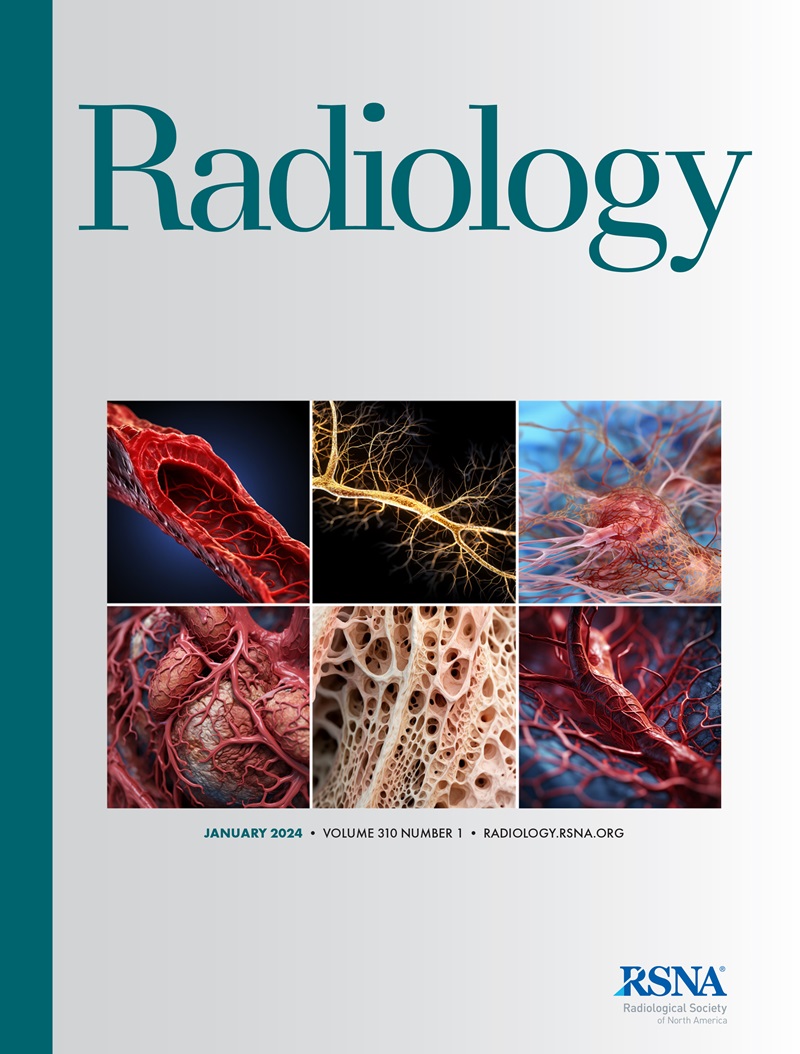求助PDF
{"title":"乳腺癌筛查数字乳腺断层合成检查顺序阅读过程中阅读者表现的变化。","authors":"Craig K Abbey, Andriy I Bandos, Mohana K Parthasarathy, Michael A Webster, Margarita L Zuley","doi":"10.1148/radiol.232885","DOIUrl":null,"url":null,"abstract":"<p><p>Background Studies suggest that readers experience perceptual adaptation when interpreting batched screening mammograms, which may serve as a mechanism for improved performance. Purpose To analyze clinical digital breast tomosynthesis (DBT) screening data to evaluate changes in reader performance during sequential batch reading. Materials and Methods This observational retrospective study used data from the radiology information system collected for screening DBT examinations performed from January 2018 to December 2019. The reference standard was established based on pathology results, if applicable, or imaging findings at 1-year follow-up. Examinations were aggregated into batches, defined as a sequence of cases for a given reader with differences in interexamination time of 10 minutes or less. Mixed-effect models were used to evaluate performance and timing across batch positions. Statistical adjustments accounted for potential confounders, including patient characteristics (age, breast density), reading factors (day of week, time of day), and between-reader heterogeneity. Results The dataset included 121 652 examinations (median patient age, 61 years [IQR, 53-69 years]), including 1081 cancers interpreted by 15 radiologists. Unadjusted false-positive rates decreased from an averaged 15.5% at the first within-batch examination to 10.5% after three sequentially read examinations (<i>P</i> < .001), without a significant change in sensitivity (82.6% vs 84.2%; <i>P</i> = .15). The interpretation time consistently decreased, achieving a substantial reduction in longer batches (average 2.8 to 2.2 minutes for noncancer examinations; <i>P</i> < .001). Adjustment for sampling bias and confounders (patient age, breast density, day of week, time of day; all <i>P</i> < .005) reduced the effect on false-positive rates (11.5% to 9.4% after three examinations; <i>P</i> < .001) and interpretation time (3.2 to 2.7 minutes for noncancer examinations; <i>P</i> < .001). Conclusion Radiologists showed improved recall rates and interpretation times without change in sensitivity over the course of batch reading of DBT screening examinations. © RSNA, 2024 See also the editorial by Iima and Satake in this issue.</p>","PeriodicalId":20896,"journal":{"name":"Radiology","volume":"313 2","pages":"e232885"},"PeriodicalIF":12.1000,"publicationDate":"2024-11-01","publicationTypes":"Journal Article","fieldsOfStudy":null,"isOpenAccess":false,"openAccessPdf":"","citationCount":"0","resultStr":"{\"title\":\"Changes in Reader Performance During Sequential Reading of Breast Cancer Screening Digital Breast Tomosynthesis Examinations.\",\"authors\":\"Craig K Abbey, Andriy I Bandos, Mohana K Parthasarathy, Michael A Webster, Margarita L Zuley\",\"doi\":\"10.1148/radiol.232885\",\"DOIUrl\":null,\"url\":null,\"abstract\":\"<p><p>Background Studies suggest that readers experience perceptual adaptation when interpreting batched screening mammograms, which may serve as a mechanism for improved performance. Purpose To analyze clinical digital breast tomosynthesis (DBT) screening data to evaluate changes in reader performance during sequential batch reading. Materials and Methods This observational retrospective study used data from the radiology information system collected for screening DBT examinations performed from January 2018 to December 2019. The reference standard was established based on pathology results, if applicable, or imaging findings at 1-year follow-up. Examinations were aggregated into batches, defined as a sequence of cases for a given reader with differences in interexamination time of 10 minutes or less. Mixed-effect models were used to evaluate performance and timing across batch positions. Statistical adjustments accounted for potential confounders, including patient characteristics (age, breast density), reading factors (day of week, time of day), and between-reader heterogeneity. Results The dataset included 121 652 examinations (median patient age, 61 years [IQR, 53-69 years]), including 1081 cancers interpreted by 15 radiologists. Unadjusted false-positive rates decreased from an averaged 15.5% at the first within-batch examination to 10.5% after three sequentially read examinations (<i>P</i> < .001), without a significant change in sensitivity (82.6% vs 84.2%; <i>P</i> = .15). The interpretation time consistently decreased, achieving a substantial reduction in longer batches (average 2.8 to 2.2 minutes for noncancer examinations; <i>P</i> < .001). Adjustment for sampling bias and confounders (patient age, breast density, day of week, time of day; all <i>P</i> < .005) reduced the effect on false-positive rates (11.5% to 9.4% after three examinations; <i>P</i> < .001) and interpretation time (3.2 to 2.7 minutes for noncancer examinations; <i>P</i> < .001). Conclusion Radiologists showed improved recall rates and interpretation times without change in sensitivity over the course of batch reading of DBT screening examinations. © RSNA, 2024 See also the editorial by Iima and Satake in this issue.</p>\",\"PeriodicalId\":20896,\"journal\":{\"name\":\"Radiology\",\"volume\":\"313 2\",\"pages\":\"e232885\"},\"PeriodicalIF\":12.1000,\"publicationDate\":\"2024-11-01\",\"publicationTypes\":\"Journal Article\",\"fieldsOfStudy\":null,\"isOpenAccess\":false,\"openAccessPdf\":\"\",\"citationCount\":\"0\",\"resultStr\":null,\"platform\":\"Semanticscholar\",\"paperid\":null,\"PeriodicalName\":\"Radiology\",\"FirstCategoryId\":\"3\",\"ListUrlMain\":\"https://doi.org/10.1148/radiol.232885\",\"RegionNum\":1,\"RegionCategory\":\"医学\",\"ArticlePicture\":[],\"TitleCN\":null,\"AbstractTextCN\":null,\"PMCID\":null,\"EPubDate\":\"\",\"PubModel\":\"\",\"JCR\":\"Q1\",\"JCRName\":\"RADIOLOGY, NUCLEAR MEDICINE & MEDICAL IMAGING\",\"Score\":null,\"Total\":0}","platform":"Semanticscholar","paperid":null,"PeriodicalName":"Radiology","FirstCategoryId":"3","ListUrlMain":"https://doi.org/10.1148/radiol.232885","RegionNum":1,"RegionCategory":"医学","ArticlePicture":[],"TitleCN":null,"AbstractTextCN":null,"PMCID":null,"EPubDate":"","PubModel":"","JCR":"Q1","JCRName":"RADIOLOGY, NUCLEAR MEDICINE & MEDICAL IMAGING","Score":null,"Total":0}
引用次数: 0
引用
批量引用


